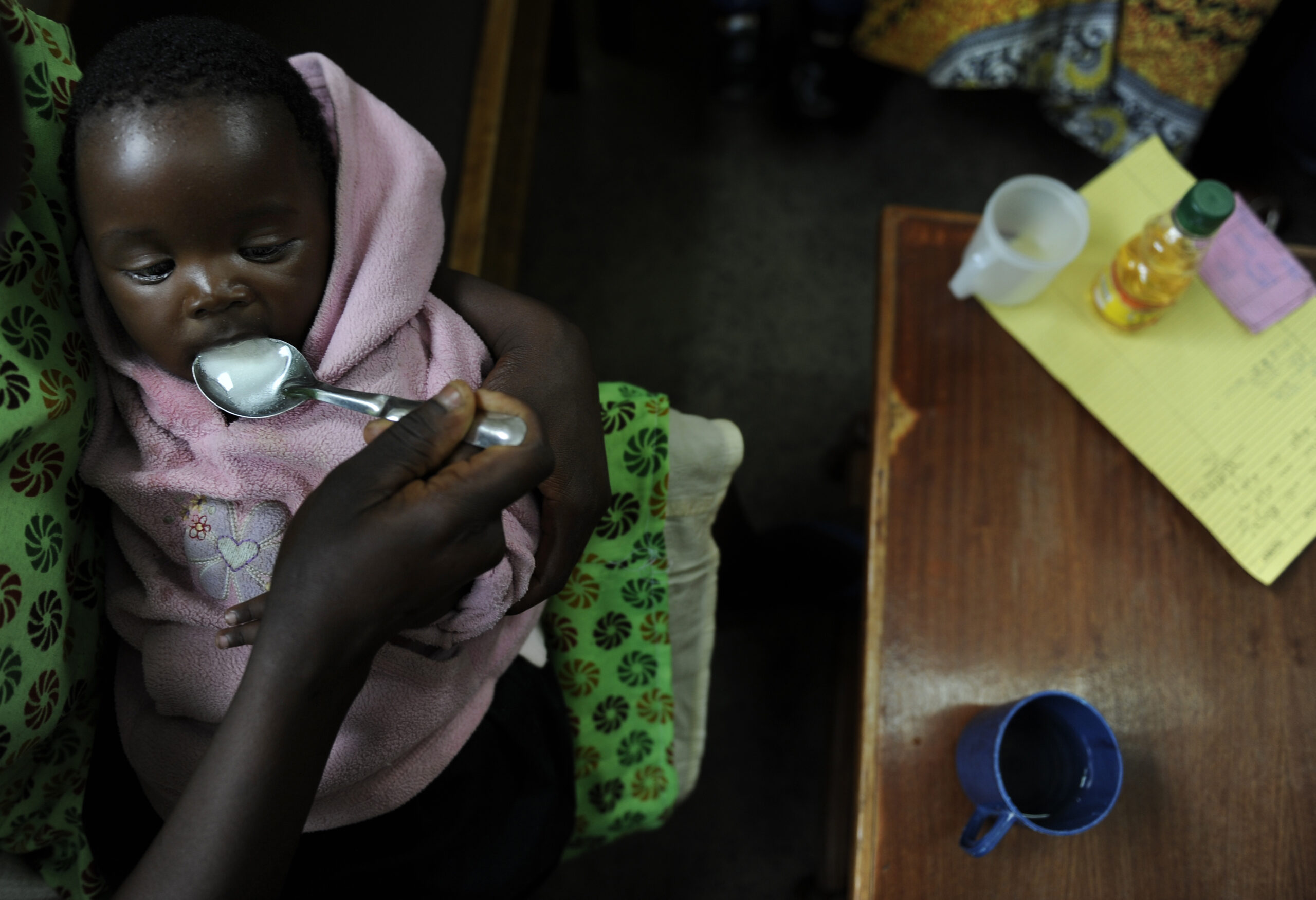
Bridging the access gap for treatment of diarrhea

Photo: PATH/Tony Karumba.
After decades of mediocre uptake of ORS and zinc, the Diarrhea Innovations Group (DIG) – an international network of child health stakeholders co-chaired by and housed within PATH – petitioned the World Health Organization (WHO) to add a listing for co-packaged ORS and zinc in its Model List of Essential Medicines (EML). On July 9, 2019, WHO updated its EML to include the co-pack as essential medicine for diarrhea management.This decision calls attention to ORS and zinc as therapy that needs to be administered together. In turn, it can help countries shape their policies and practices to ensure more equal availability of these products in the hands of healthcare providers.
Seventeen leading global health institutions provided letters of support to DIG’s application, including the Bill & Melinda Gates Foundation (BMGF). Dr. Rasa Izadnegahdar – deputy director of the Maternal, Newborn & Child Health Discovery & Tools portfolio within the Global Health division at BMGF – shared his hopes for what this change in the global guidance can mean for improving access to ORS and zinc as the first line treatment for children with diarrhea. This post was originally published on the BMJ Global Health blog.
This week, the global public health community welcomed the World Health Organization’s decision to include co-packaged oral rehydration salts (ORS) and zinc on its Model List of Essential Medicines for Children (EMLc). This new global normative guidance is an important and enabling step toward improving access to first line treatments for children with diarrhea.
This decision is important because it reinforces the lifesaving benefits of both ORS and zinc in treating childhood diarrhea. ORS has long been hailed as a major contributor to the decline in diarrhea deaths among young children since it was first introduced in global diarrhea control programs over 40 years ago. While this decline has been impressive, there remain vulnerable populations with persistently low access to these inexpensive and effective commodities. It is sobering to be reminded that in 11 of the 15 highest-burden countries, 6 have combined ORS and zinc coverage levels of 2 percent or less.
We know that on a strong backbone of community interventions delivered through a well-trained cadre of health workers, the combined use of ORS and zinc could prevent an estimated 64% of child deaths due to diarrhea. Co-packaged presentation is a key lever for driving better usage, and where introduced, countries see a significant increase in uptake of both products.
This decision is also important because it formalizes the long-standing joint call by WHO and UNICEF to use both ORS and zinc to treat diarrhea in children. Countries can use this standard to shape national policy and treatment guidelines for diarrhea, prioritize what products they procure and supply, and adapt provider training practices to allow for improvement in the equity of access. We hope that this leads to more equal procurement of these products and translates to more availability in the hands of community health-workers.
In partnership with countries, we’ve already been helping to build evidence of what works and what doesn’t to scale up ORS and zinc. The experience of countries like Bangladesh have clearly shown that even in the absence of improved national coverage levels, improved equity of coverage ensuring that vulnerable populations have access can translate to significant declines in mortality. Further reduction of deaths will likely not occur without a concerted effort targeting marginalized communities and those with low access to primary care services.
By calling attention to ORS and zinc as therapy that needs to be administered together, WHO took an important step in helping countries build on the existing evidence. Working together to improve access to ORS and zinc as one of the important elements of the integrated approach to child health, we can help accelerate the decline in child mortality, and, ultimately, advance progress toward the United Nations Sustainable Development Goals and universal health coverage.
Today, we have evidence of what works and what doesn’t. It is time for us, as a global community, to act on that evidence.


